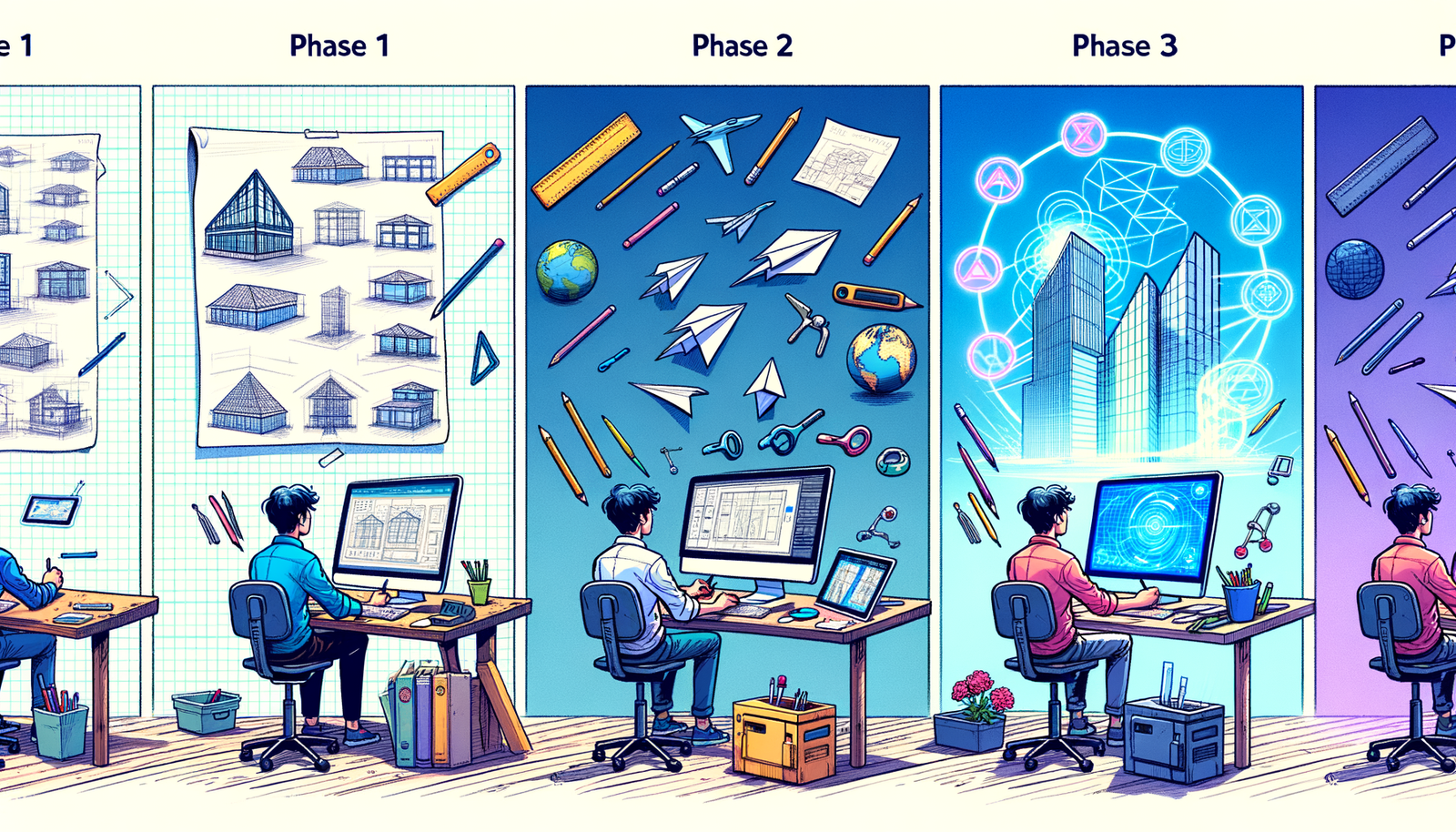Your Cart is Empty
Customer Testimonials
-
"Great customer service. The folks at Novedge were super helpful in navigating a somewhat complicated order including software upgrades and serial numbers in various stages of inactivity. They were friendly and helpful throughout the process.."
Ruben Ruckmark
"Quick & very helpful. We have been using Novedge for years and are very happy with their quick service when we need to make a purchase and excellent support resolving any issues."
Will Woodson
"Scott is the best. He reminds me about subscriptions dates, guides me in the correct direction for updates. He always responds promptly to me. He is literally the reason I continue to work with Novedge and will do so in the future."
Edward Mchugh
"Calvin Lok is “the man”. After my purchase of Sketchup 2021, he called me and provided step-by-step instructions to ease me through difficulties I was having with the setup of my new software."
Mike Borzage
Design Software History: Evolution of Design Software in Smart Building Architecture: A Historical and Technological Perspective
July 28, 2024 3 min read


Introduction to Design Software in Smart Building Design
Smart buildings are an advanced concept in architectural design where various systems are integrated to optimize the building's performance and enhance the user experience. These systems often include HVAC (heating, ventilation, and air conditioning), lighting, security, and energy management. By leveraging cutting-edge design software, architects and engineers can efficiently plan, simulate, and implement smart technologies within a building's architecture.
Design software plays a pivotal role in the initial sketching and conceptual design phases. This software not only helps in visualizing the architectural layout but also integrates various smart technologies early in the planning stage. This integration ensures a seamless connection between different systems, resulting in a harmonious and efficient building operation.
Historical Development of Design Software for Smart Buildings
The journey of design software in smart buildings can be traced back to the introduction of CAD (Computer-Aided Design) software. One of the early pioneers in CAD was AutoCAD, developed by Autodesk. Initially, CAD software focused primarily on 2D drafting, which revolutionized the architectural design process by digitizing hand-drawn blueprints.
The transition from 2D to 3D modeling marked a significant milestone in architectural design. 3D modeling allowed architects to create more detailed and realistic representations of their designs, which proved crucial in understanding spatial relationships and detecting potential issues early in the design process.
Autodesk played a crucial role in advancing architectural design tools. With the development of sophisticated software like AutoCAD and Revit, Autodesk provided architects and engineers with robust tools for creating detailed and accurate building models. Bentley Systems also emerged as a key player, offering integrated solutions for building design through their software suite, including MicroStation and AECOsim Building Designer.
The evolution of Building Information Modeling (BIM) tools brought about a significant shift in the design and construction industry. BIM tools like Revit fundamentally changed how architects and engineers approach building design by facilitating the integration of smart systems. BIM allows for the creation of comprehensive digital representations of buildings, which include detailed information about each component and system. This level of detail ensures that all stakeholders have access to accurate and up-to-date information, enabling better decision-making and collaboration throughout the project lifecycle.
Key Technologies and Concepts in Smart Building Design Software
Parametric design is a crucial concept in smart building design, allowing architects to create flexible and adaptable building models. Parametric design involves defining building elements through parameters that can be adjusted to explore different design alternatives quickly. Software tools like Rhino and Grasshopper are popular choices for parametric and generative design, enabling architects to create complex geometries and optimize designs for various performance criteria.
Simulation and analysis tools play a vital role in optimizing building performance. Software such as ANSYS and EnergyPlus are used to simulate various aspects of building performance, including energy consumption, thermal comfort, and daylighting. Additionally, Computational Fluid Dynamics (CFD) tools are employed to design and optimize HVAC systems, ensuring efficient airflow and thermal regulation within the building.
Interoperability and data exchange standards are essential for seamless collaboration among different stakeholders in a smart building project. Standards like Industry Foundation Classes (IFC) and Construction Operations Building Information Exchange (COBie) facilitate the exchange of data between different software applications. Companies like Dassault Systèmes have been instrumental in promoting interoperability through their development of comprehensive data exchange solutions and support for open standards.
Case Studies and Future Directions
Looking forward, several emerging trends are poised to shape the future of smart building design. The integration of IoT (Internet of Things) and AI (Artificial Intelligence) technologies is expected to enhance the intelligence and responsiveness of smart buildings. IoT devices can collect and analyze real-time data from various building systems, enabling predictive maintenance and optimized operation. AI algorithms can leverage this data to make informed decisions, improving energy efficiency and occupant comfort.
Another promising technology is AR (Augmented Reality) and VR (Virtual Reality), which can significantly enhance design visualization and stakeholder engagement. AR/VR tools allow architects to create immersive experiences, enabling clients and stakeholders to explore building designs in a virtual environment. This interaction can provide valuable insights and feedback, facilitating better design decisions and improving project outcomes.
In conclusion, the transformative impact of design software on smart building design is evident. From the early days of CAD to the advanced capabilities of BIM and simulation tools, design software has continuously evolved to meet the needs of the architecture, engineering, and construction industry. While significant progress has been made, ongoing challenges such as interoperability and data management remain. However, with the rapid advancement of technology, the future prospects for smart building design are promising, offering new opportunities for innovation and efficiency.
Also in Design News

Cinema 4D Tip: Tiered Cinema 4D Render Presets with Tokenized Outputs
December 16, 2025 2 min read
Read More
Revit Tip: Duct Routing Best Practices and Fabrication Workflow
December 16, 2025 2 min read
Read More
ZBrush Tip: GPU-Optimized ZBrush and Redshift Workflow for High-Poly Scenes
December 16, 2025 2 min read
Read MoreSubscribe
Sign up to get the latest on sales, new releases and more …


